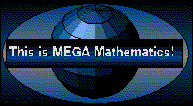


Addition, subtraction, multiplication, and division seem special because they are well-known and very practical in everyday living, but there are infinite possibilities for defining and studying other operations. That is because operations can be defined in any way that seems useful for any purpose--including arcane, theoretical ones and whimsical, interesting ones..
Numbers are not the only mathematical objects on which operations can be performed. Turning a geometric object into it's mirror image is an operation on that object. A variety of operations can also be performed on knots, finite state machines, and graphs.
In other words, addition, subtraction, multiplication, and division are the tip of the iceberg when considering the operations that can be performed on mathematical objects. It is interesting to imagine what the operations of addition, subtraction, multiplication, or division would mean if they were performed on a certain mathematical object. (Sometimes they make sense, and sometimes they don't!) It is also interesting to invent rules for transforming objects and giving those operations brand new names.


